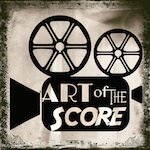Episode 36: Interstellar
/Time dilation is a funny thing. For many, we understand there’s been a bit of a gap between episodes. For us, however, it’s been mere minutes since our last appearance – but thanks for sticking around nonetheless, as we’re finally back to discuss Hans Zimmer, Christopher Nolan, time, and Interstellar. Join us as we chat all things organs, pianos, space travel, and answer the question of whether Interstellar is Zimmer’s greatest score of all.
Episode notes:
01:51 – Did you miss us?
09:02 - interstellar!
13:55 – Hans Zimmer and Christopher Nolan’s time together
15:35 – The piece of paper and early demos
24:31 – soft soft LOUD
27:07 – The discovery theme, and Interstellar’s organ
38:08 – Woodwinds of Change
39:40 – Chastain’s piano
41:25 – Countermelody of doom
45:22 – The hope theme, loops and DAWs
54:10 – Messages from home
59:48 – The tesseract acts
1:02:40 – Finding Anne Hathaway
1:06:48 – Gravity
1:13:35 – 2001: An Interstellar Odyssey
1:20:48 – The humanity theme
1:32:59 – The sound of silence
1:37:55 – Time
1:42:15 – Maths with Poggo
1:49:45 – Dr Mann kind? No, he’s quite mean
1:53:30 – Try spinning, that’s a good trick
1:59:25 – Nick’s favourite ka-cue
2:00:51 – V for Vinterstellar
2:03:26 – Final thoughts
We love to hear from our listeners – get in touch via Twitter, Instagram, and Facebook, and if you like Art of the Score, please take a moment to subscribe, rate and comment.









































